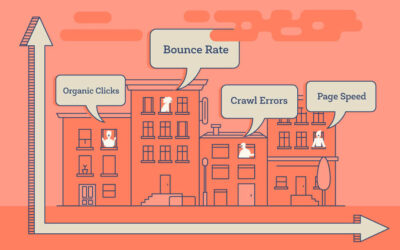Your site’s visibility is crucial to obtaining new business, improving your credibility in your industry, and competing against other businesses in your area of expertise. The higher your ranking on the search engine results pages (SERP), the more likely users will visit your page organically, so search engine optimization, or “SEO,” is key.
What Are the Different Types of User Traffic?
First, it’s important to understand the types of traffic your website will accrue. Whenever a user visits your website, this is considered traffic, and the different types of traffic impact your site’s ranking. There are five types of user traffic:
- Organic — A user finds your website through keyword search, i.e., when they search for either your brand or a keyword related to your business on a search engine.
- Paid — Businesses buy pay-per-click (PPC) ads on the results page, typically as the first website result shown.
- Direct — A user enters your URL directly into their browser’s search bar. These users are most likely already familiar with your business and services.
- Referral — Referrals occur when other sites hyperlink to your pages. These are also considered “backlinks,” which are a key part of search engine optimization (SEO) and can affect your ranking.
- Social — Traffic comes to your pages from social media. Social traffic can be either organic or paid.
For this article, we’ll primarily focus on organic and paid traffic, the two most common sources of site visits. While paid traffic is valuable and legitimate for growing your business, you need to optimize your website for the Google Search algorithm to gain organic search traffic.
What is Google’s Search Algorithm?
In 2023 alone, 5.9 million Google searches happened every minute, and Google comprises almost 92% of the total global search engine market. Because so many users rely on Google’s search results to be relevant and reputable, Google utilizes a Search algorithm that automatically combs through website content and then displays your site on the SERP. Essentially, this algorithm will comb through the content on your site, and it will provide a ranking in search results based on five factors:
- Meaning — The algorithm determines the user’s query intent. It removes irrelevant results, such as knowing the difference between nouns and verb versions of the word “lie,” using context clues and language models.
- Relevance — The relevance of a web page to what you’re looking for is based on the type of site (such as a government site or an online store) and the site’s keywords.
- Quality — The trustworthiness or credibility of a site will improve the ranking. For example, a page from an online encyclopedia would have a higher search result than a blog.
- Usability — How quickly a site loads and whether it’s mobile-friendly can impact Google’s ranking. If your site isn’t mobile-friendly or bogged down in slow loading times, it will decrease your place in results.
- Context — A user’s search history, location, and other contextual information affect the results based on what the algorithm thinks is most useful to you.
Keep in mind that in addition to your website’s pages, the pages of your competitors will also appear — which is where search engine optimization comes in.
How to Use Search Engine Optimization (SEO) to Improve Your Rankings
When you’re just starting, the first SEO goal should be understanding your current SERP rank and improving your visibility. To do so, here are five first steps to improve your rankings.
1. Use Keyword Research to Capture Organic Traffic
One of the easiest ways to boost organic traffic to your website is to find out what keywords your target audience is using. Many free tools can provide you with information on words related to your business, how many users typically use them daily, and what other companies utilize. We recommend:
- Google Keyword Planner (particularly useful for paid keywords)
- Moz Keyword Explorer
- Ahrefs
- Semrush
2. Use On-Page Search Engine Optimization (SEO)
Once you have a list of valuable words, include them in the website copy, headers, and image file names. Be sure to include them in meta titles and descriptions (which will show up on the SERP) to catch readers’ eyes and guide them toward your website.
3. Clean Up URLs
URLs are a key part of SEO. Page addresses should be descriptive and utilize targeted keywords. For example, the subdirectory (or part of the URL that comes directly after the top-level domain) should describe the page’s content. An address that uses “/what-is-seo-ranking” will be more effective than a vague one, such as “/page0001.”
4. Optimize Your Site for Mobile
If you haven’t already, ensure that your website is mobile-friendly, i.e., that its layout and content are compatible with desktops, tablets, and mobile devices. Approximately 63% of all Google searches are on mobile devices, a significant portion of your potential customer base.
5. Search for Backlinks
The reputation of websites that link to your pages can significantly impact your site’s credibility. Search engine marketing (SEM) tools, like Moz or SEMrush, can conduct an audit so you can proactively manage and remove spam links.
Get Started with TenStrat
TenStrat is a Performance Marketing agency passionate about driving rapid growth through a data-driven approach. With over 25 years of combined Digital Marketing experience, we bring a wealth of knowledge and expertise working with start-ups to Fortune 500s. We trust in data and analytics to help us hypothesize, prioritize, and test innovative growth strategies. We work with companies of all sizes to focus on scalability and rapid success. Want to learn more? Contact us today!


